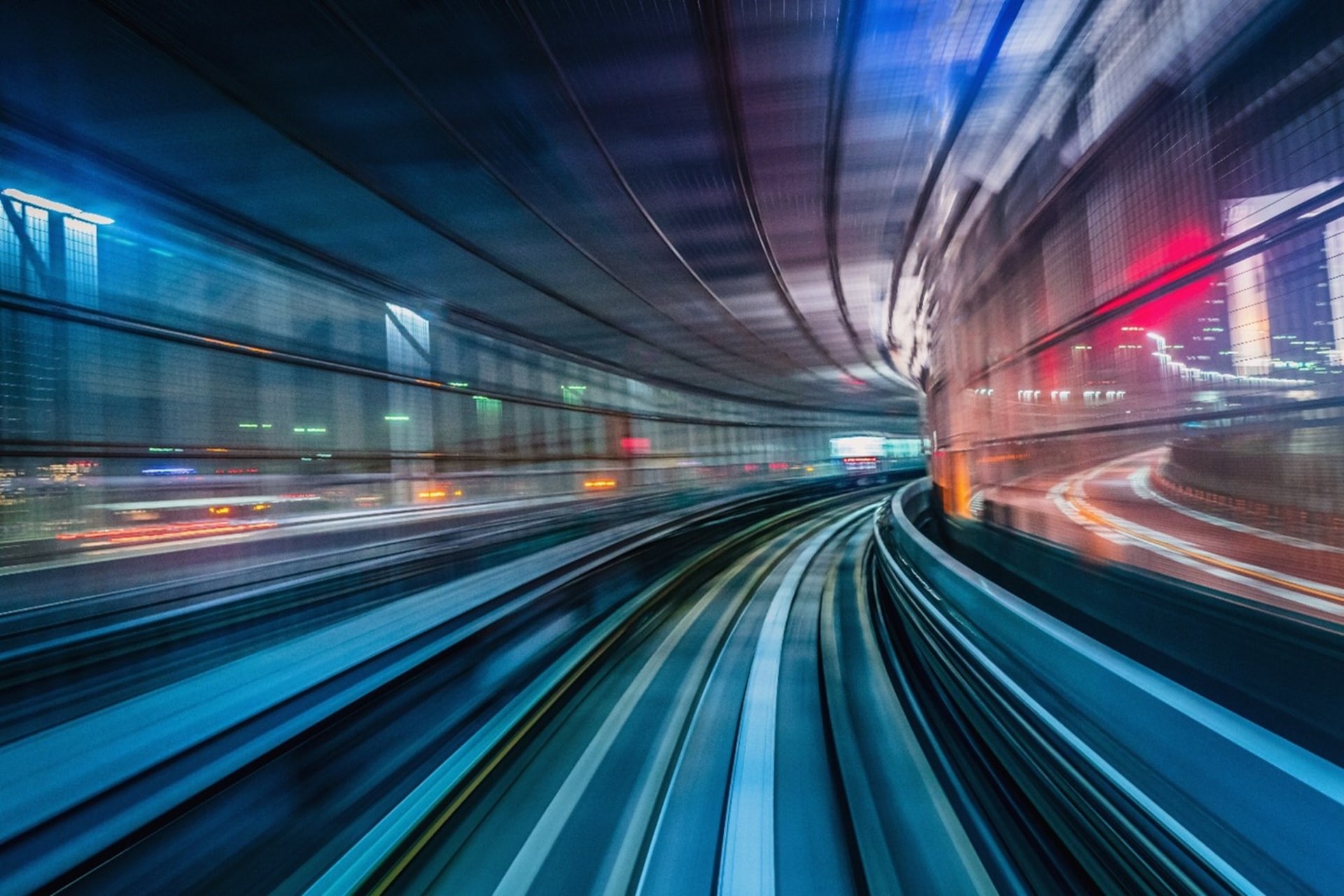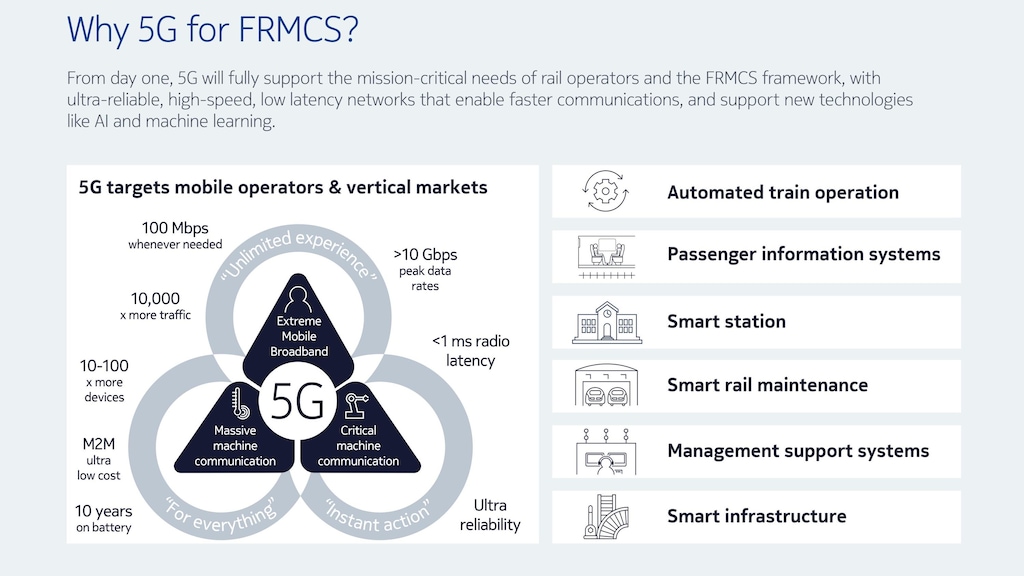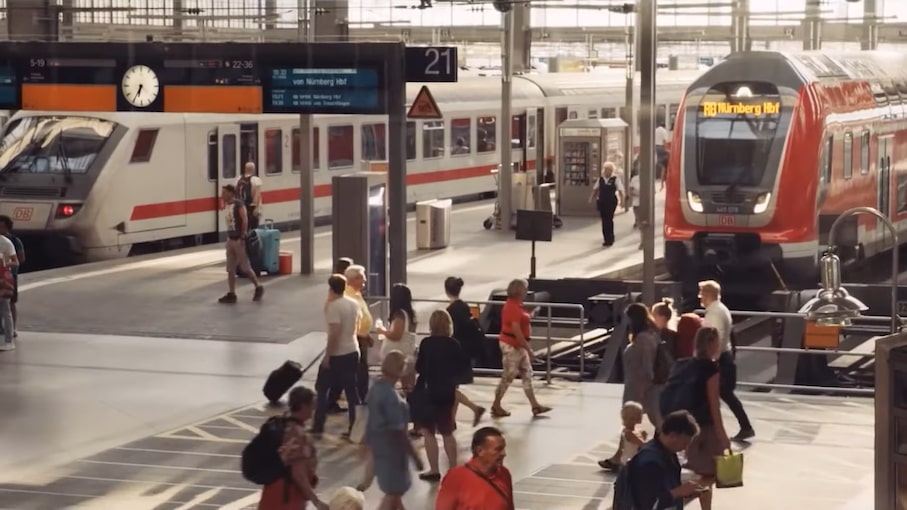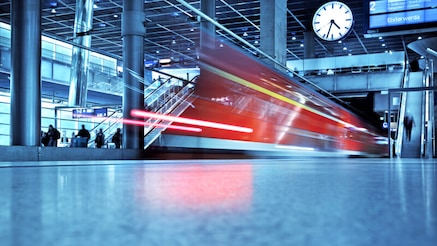Laying the tracks for digital railways

The railways have long been regarded as one of the most notable innovations of the Industrial Revolution. Since then, it has become an integral part of our economic and social fabric, connecting communities, along with creating novel opportunities for trade and commerce. Despite the stiff competition offered by civil aviation and vast road networks that witnessed a boom from the middle of the 20th century, rail travel has remained popular, especially in the developing world.
Over the past decade, rail modernization has progressed at a rapid pace. From high-speed rolling stock, extensive electrification to smart signalling systems and dedicated freight corridors, several initiatives are being progressively launched across the world. Railway operations are mission critical in nature and despite the drive to incorporate the latest technologies, the industry is still using antiquated legacy systems. To remain competitive, digitalization of the whole infrastructure is imperative.
“The future of rail transport will depend on taking advantage of advanced communications systems to enhance safety, increase operational efficiency and upgrade the passenger experience,” says Karsten Oberle, Head of Rail at Nokia.
The merits of going digital
Digital railway can offer new and fully connected experiences. With a reliable, secure communications network, the sector can take advantage of superior levels of “connectedness” and automation, while reducing costs and boosting efficiency.
One such application is improved automation, which holds several benefits for rail operators. It has the potential to reduce human error, make train operations safer and lower costs associated with accidents. Sensor and visual information can be processed faster triggering swift corrective actions. Advanced systems can also harness the processing power of the cloud, as well as artificial intelligence (AI) and machine learning (ML), to better recognize anomalies and predict issues before they arise.
There are several trials currently underway utilizing 5G communications to support rail automation. One of these is being conducted by Deutsche Bahn in Hamburg, where it is testing automated shunting operations as part of its Digital S-Bahn Hamburg project. This will include fully driverless shunting of empty trains near Bergedorf station, based on the transmission of train control information over a 5G mobile network.
Another application relates to smart surveillance systems that reduce hazards drastically and flag intrusions at railway crossings. Advances in camera technology, data models, machine learning and edge-cloud computing platforms will make it possible to analyze live video and provide actionable real-time data from crossings.
Communications technologies, particularly wireless, play a key role in this digital transformation; however, wireless technologies such as Wi-Fi often fail to meet reliability and coverage demands. LTE/5G private wireless networks are key to unlocking new productivity gains. An LTE/5G private wireless network is a standalone network providing reliable all-pervasive connectivity focused on operational assets and users. It will enable modern railways to be more productive and prepared for the next age of Industry 4.0 technologies such as automated shunting, connected workers and convenient use of digital devices.
Foolproof cybersecurity is essential to the smooth running of any digital operation, more so when it it’s linked to a strategic asset like a rail network. As the industry employs the Internet of Things (IoT) and the cloud and the number of data points and sensors grow exponentially, the risk of cyberattacks rise accordingly.
Threats can emanate from within and outside the network. A traditional approach to security is not enough, given the dynamic nature and scale of the challenge. An intuitive analytics-driven automated security architecture will offer better protection by processing data from different sources while anticipating and identifying evolving threats.
“In some ways digitalization will increase cyber threats – as formerly manual processes become connected and digitalized. A new approach to cybersecurity should be in place that offers robust defensive mechanisms and in-depth security, protecting the network at multiple layers,” says Oberle.
FRMCS underpinned by 5G
A ground-breaking development that will take railways to the next level is the unveiling of a brand-new communications framework, the Future Railway Mobile Communication System (FRMCS). Led by the European Union Agency for Railways (ERA) and the International Union of Railways (UIC), FRMCS will replace the two decade-old Global System for Mobile Communications-Railway (GSM-R) system.

Rail digitalization requires multiservice backbone networks serving the demand of mission critical applications with higher capacity and more flexible and rapid adjustment to meet the needs of individual services, while at the same time maintaining the highest possible availability and security. FRMCS will do just that and much more by allowing for the implementation of many use cases and services, which will benefit from the underlined 5G technology.
“GSM-R has served the rail industry well for many years, but it lacks broadband capabilities and will get replaced by FRMCS by the end of this decade. Based on 5G, it will support a plethora of use cases such as automated train operation, smart rail maintenance, smart infrastructure and stations,” says Fai Lam, Director of Transport Marketing at Nokia.
5G offers unique opportunities to rail operators. Its high speed and extreme traffic handling capacity, together with ultra-low response times, highest reliability and support for massive machine-type communication, will allow rail networks to improve safety, optimize costs and make their services more attractive to passengers. Such capabilities will make the telecommunication network the cornerstone of railways’ ambitions for further digitization.
5G will bring additional communications flexibility for rail companies that use dedicated networks for mission critical services and commercial 5G network slices from CSPs for additional capacity relating to non-critical services. This will bring new opportunities and applications based on mobile broadband capabilities.
FRMCS is intended as a single global standard for railway communications. One of its main objectives is to achieve maximum flexibility by separating the railway functions from the network and radio bearer that carries them. This makes it possible to use standard mobile radio technologies including 4G and 5G, Wi-Fi, fixed networks or even satellites. In contrast to GSM-R, railway functionality is mainly realized on the application layer.
Heralding a slew of new capabilities, FRMCS, will bring to bear advanced applications. One such example is increased and widespread automation that will reduce human error and make rail travel much safer. A combination of visual aids and sensor technology will make it easier to process information faster, minimizing the time to take corrective actions. The power of the cloud along with AI/ML will assist in predicting and detecting anomalies. From a maintenance standpoint, FRMCS can lower the need for manpower to monitor assets. 5G-powered drones can fly over rail yards, feeding a steady stream of data and information to the control center and other systems.
Passengers, today, expect seamless and bespoke communications services when booking tickets or when traveling. Real-time updates on journeys, broadband access in-station and onboard have become the norm. The new standard must consider the constantly changing expectations of customers and cater to their needs at a short notice. In that regard, FRMCS will help staff to upgrade the passenger experience.
At a time when a climate-stressed world is desperately trying to reduce carbon emissions, rail travel has emerged as an eco-friendly mode of transportation. According to the International Energy Agency (IEA) “passenger rail travel is the least energy- and CO2-intensive of all motorised transport modes”. It is also the least reliant on oil. About 75 percent of conventional passenger rail uses electricity while the remaining 25 percent runs on diesel. Furthermore, almost all urban (metro and light-rail) and high-speed rail networks are electric. 5G and FRMCS will provide the foundation for additional automation as well as sensors to track energy use and minimize it, wherever possible.
“The rail sector is attempting to reduce its carbon footprint. Digitalization will accelerate the transition by increasing efficiency and capacities. These translate into putting more trains on the same kms of tracks, thus moving more passengers and goods,” says Lam.
Zipping to the future
The rail sector is on the verge of the largest technology leap in its history. The revolutionary changes introduced by digitalization will be an opportunity but also a challenge. Indeed, it will require a new mindset, business models and financial investment. The industry will have to pull together and join forces to thrash out a clear roadmap. The benefits to capacity, cost efficiency and reduced carbon emissions are immense and once clear objectives are defined, digitalization can truly transform the viability and competitiveness of the industry for many future decades.
Read more
About Nokia
We create technology that helps the world act together.
As a trusted partner for critical networks, we are committed to innovation and technology leadership across mobile, fixed and cloud networks. We create value with intellectual property and long-term research, led by the award-winning Nokia Bell Labs.
Adhering to the highest standards of integrity and security, we help build the capabilities needed for a more productive, sustainable and inclusive world.
Media Inquiries:
Nokia
Communications
Email: press.services@nokia.com



